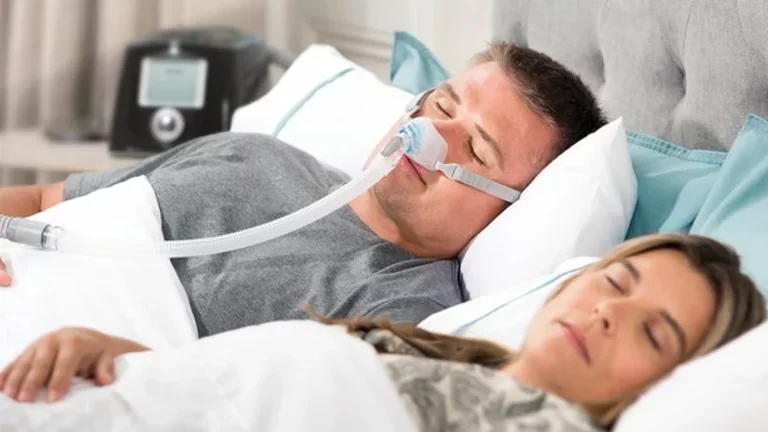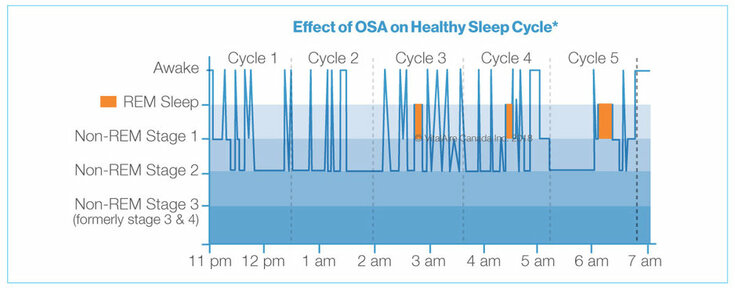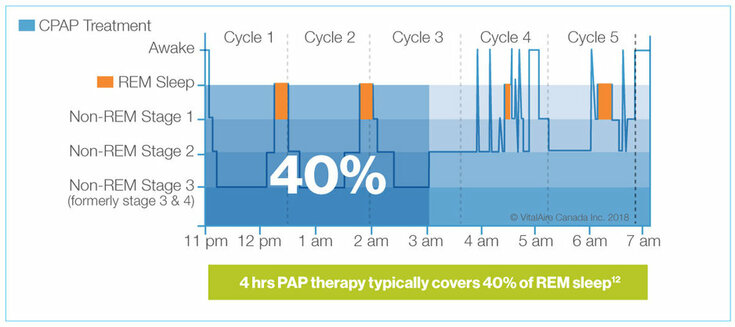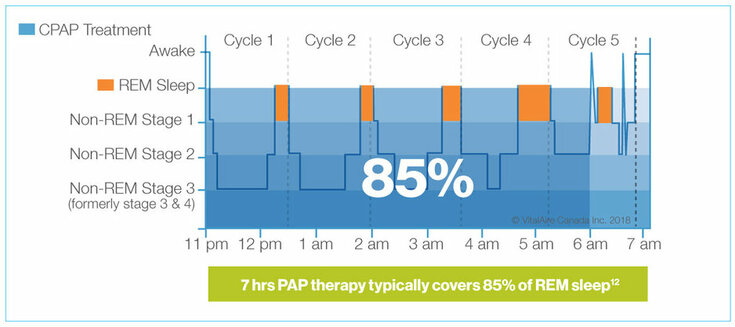Is it ok to use CPAP for only a part of the night?
How does partial CPAP treatment impact your sleep?
Your sleep is made up of REM (rapid eye movement) and non-REM sleep, each linked to specific brain activity. You cycle through REM and non-REM sleep several times on a typical night with increasingly longer, deeper REM periods occurring toward the end of your sleep period.
Non-REM sleep stages:
- Stage 1: Your body relaxes but your sleep is lighter.
- Stage 2: Your heart rate slows and your body relaxes further to prepare for deep sleep.
- Stage 3 (and 4): Deep restorative sleep, which helps you feel refreshed in the morning.
REM Sleep also known as the dreaming stage, is marked with orange below:
This diagram shows what a healthy night’s sleep can look like:
Untreated sleep apnea causes frequent awakenings in order to open the airway and breathe, leading to significant loss in REM and deep sleep.
This diagram shows how sleep apnea can affect your sleep cycles:
What happens during REM sleep?
REM, or rapid eye movement, occurs every 60-90 minutes and enables your emotional processing, memory formation and storage, and the learning and development of new skills.
During REM you dream, and your heart rate and breathing quicken. Your brain signals your muscles to relax to prevent your body from acting out in response to the images, sounds, and other sensations that fill your dreams. As a result, apneas are more severe during REM because your throat muscles are more likely to collapse, and your body less able to wake up to take a good breath full of oxygen.1
What happens when using CPAP for only a part of the night?
When you sleep with your CPAP machine for only a part of the night you still have apneas:
CPAP: how many hours per night are enough?
Your CPAP mask should be worn whenever you sleep to maximize your CPAP therapy success and allow you a normal, healthy sleep.
The diagram below shows that CPAP treatment over a 7 hour period (compared with 4 hours) covers 85% of your REM Sleep and allows you to fall into Stage 3 deep sleep for the restorative sleep experience you need.
Even if you naturally sleep less than 7 hours per night, using your CPAP for your entire sleep duration will prevent apneas from disrupting your sleep and get you the restorative sleep you deserve.
This diagram shows what a normal, healthy sleep with CPAP treatment can look like:
CPAP therapy at VitalAire
Major advances in CPAP comfort from quiet CPAP machines to softer masks, integrated humidifiers, smaller pillows, and interactive CPAP apps make it easier to adhere to CPAP.
At VitalAire, we provide a complete StayWell CPAP Support Program to ensure that you have an effective and a comfortable CPAP treatment.
To ask us a question or book an appointment, contact us today.







